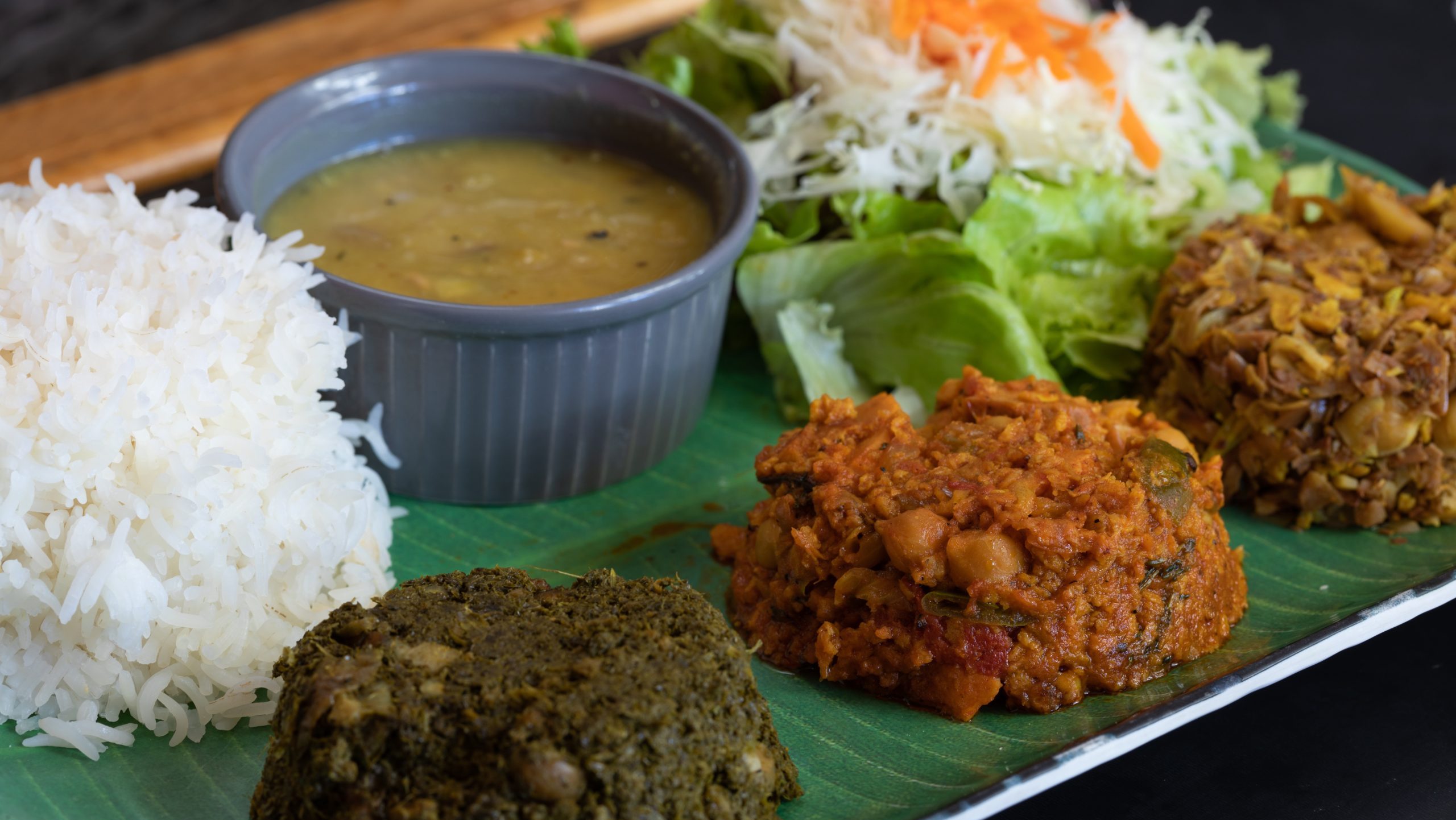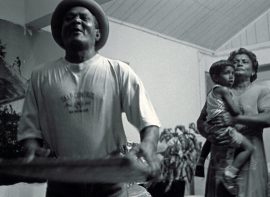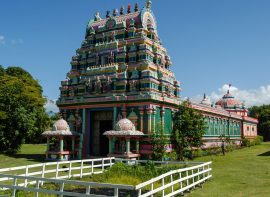

Crafts
Local crafts (peï, pronounced country) are rich and diverse, depending on the region you visit. In the cirque de Cilaos, local crafts revolve around lace-making, lentil cultivation and wine production. In the wild south, south of Saint-Pierre, the focus is on vanilla or vacoa basketry (a ubiquitous fat plant). In the west, around Saint-Leu, jewelry is made from farmed tortoiseshell. Artisans’ creations can be found all over the island, in stores and markets…
Gastronomy
Reunionese cuisine is the result of a blend of Malagasy, French, Indian, East African and Chinese influences brought to the island by successive immigrants. An exotic cocktail of a thousand colors, scents and flavors, it is spicy, flavorful and relatively hearty.
Aperitif
Reunionese cuisine accords an important role to the aperitif as an integral part of the meal. It’s not just an opportunity to enjoy a punch or a rhum arrangé, but also to sample a variety of appetizers, the most traditional of which are samoussas, bonbons piment, bouchons or piments farcis.
Inputs
Starters can be very varied, but here are a few local specialties: palm salad is prepared with a small variety of palm. Chouchou gratin, also known as chayotte or christophine, grows under trellises. Or avocado with shrimp, green papaya salad and a plate of smoked tropical fish.
Dishes
Always accompanied by rice and grains (peas, kidney or white beans, lentils), traditional dishes include “curry”, the local version of Indian curry, rougail and civets. In addition to the dish and the grains, cooked or raw greens are served, called brède when cooked. Asian-inspired dishes (shop suey, Cantonese rice) and Indian-inspired dishes (massalé or vindaye) are also very popular. Accompaniments include vegetable achard, tomato rougail, green mango or eggplant (known locally as bringelle), all spiced to perfection.
Desserts
These are generally seasonal fruits: mangoes, passion fruit, Victoria pineapple, letchis and longanis in summer, guava trees in the austral winter (cool season between May and September). There are also a variety of cakes, such as gâteau patate (sweet potato), gâteau ti’son (corn), gâteau manioc and banana fritters. Réunion also produces a number of cheeses from Plaine des Cafres and Takamaka, and red and white wine from the cirque de Cilaos.
All that’s left is to sip a small cup of roasted coffee, poured the old-fashioned way, and the inevitable small glass of rhum arrangé.
Peï herbal teas
16 medicinal plants from La Réunion were listed in the French pharmacopoeia in August 2013. This is official recognition of the traditional know-how of local medicinal plants, particularly in herbal teas. Ayapana, ambaville, café marron or fleur jaune, each has its own particularity and helps treat a specific ailment:
- Bois de Joli coeur (Pittosporum senacia): the leaves are used to treat skin problems (external use, applied to the skin).
- Ayapana (Ayapana triplinervis): to treat digestive disorders (vomiting, nausea, indigestion, intestinal burning, etc.) and diarrhea. (use leaves in infusion or decoction).
- Yellow flower (Hypericum lanceolatum): as a “refreshing” herbal tea, but also for blood circulation (use leaves, flowers and flowering tops as a decoction).
- Patte Poule (Vepris lanceolata): the leaves are used to relieve pain following minor traumas such as contusions, sprains, strains, bruises, blows… its properties are quite similar to those of arnica (external use, cutaneous application).
- Coffee ling (Mussaenda arcuata): This plant has anti-inflammatory and depurative properties. It is also used as a refreshing herbal tea (infusion or decoction of leaves). Ambavilla (Hubertia ambavilla): used to treat stomach ulcers and skin disorders such as eczema, acne and mycosis. (use leaves in decoction).
- Osto wood (Antirhea borbonica): for its healing action (external use, cutaneous application).
- Kidney wood (Dodonaea viscosa): this plant has diuretic and anti-inflammatory properties. It is highly effective for treating joint pain (rheumatism, osteoarthritis, sprains, etc.), as well as kidney stones (use leaves in infusion or decoction).
- Brown coffee (Coffea Mauritiana): to treat diabetes.
- Bois maigre (Nuxia verticillata): a plant with diuretic and draining properties. It is also used to combat cholesterol (leaves used as an herbal tea).
- Black olive wood (Olea europaea africana): against hypertension.
- Brown guava (Aphloia theiformis): for its diuretic and draining properties. Brown guava is also used locally as a refreshing herbal tea (leaves used as a decoction). Faham (Jumellea Fragans): an orchid endemic to the Mascarenes. Its leaves are used in herbal teas to treat flu, colds and asthma.
- Olive wort (Secamone volubilis): this plant has diuretic and depurative properties. (use of leaves in herbal tea)
- Brown peachwood (Psiloxylon mauritianum): to combat excess cholesterol. It can also be used to treat albuminuria (leaves used as herbal tea).
- Bois Jaune (Ochrosia borbonica): endemic plant in danger of extinction, protected by ministerial decree. It is used as a febrifuge, but also as a tonic (bark and leaves are used in herbal teas). There are around a thousand trees left on Réunion Island.
Source: Aplamédom (Association pour les Plantes Aromatiques et Médicinales de La Réunion).
Vanilla and rum
Vanilla
Vanilla was brought back from South America by the Spanish conquerors in the 16th century from the Aztecs. In the following century, vanilla beans were successfully imported into Europe. It was in the 19th century that this orchid was introduced to Réunion Island. The difficulty of growing vanilla lies in its fertilization, which is carried out by only two species of bee. This made large-scale production a real challenge.
At that time on the Ile Bourbon, Ferreol Beaumont Bellier was growing vanilla plants on his estate in Sainte-Suzanne out of an interest in botany. In 1841, his young slave Edmond Albius, introduced to botany by his master, made the discovery that would revolutionize vanilla cultivation on Reunion Island. See ” Reunion famous people: Edmond Albius “.
At the beginning of the 20th century, Réunion was the world’s leading producer, with 1,200 tonnes, representing three-quarters of global production. Appreciated worldwide for its quality, “Bourbon vanilla” production spread to the various islands of the Indian Ocean: the Seychelles, Madagascar and then the Comoros.
Where can I find vanilla?

You can buy vanilla at the island’s various markets or directly from the growers, mainly in the east and south of the island. Here are the different stages in vanilla production:
Stage 1 – Scalding: wicker baskets filled with green vanilla beans are immersed in water heated to 65°C for three minutes;
Stage 2 – Steaming: the pods are immediately placed between woollen blankets in large crates for twelve to fourteen hours; kept warm in this way, they lose their water, evolve enzymatically and acquire their dark chocolate color;
Stage 3 – Drying: for two to six weeks, depending on its potential quality, the vanilla is dried for a few hours a day, first in the oven (65°C) on racks, then in the sun, and finally in the shade;
Stage 4 – Maturing: lasts eight months in wooden trunks lined with parchment paper, during which time the aroma develops.
Stage 5 – Sorting the vanilla beans by grading: the beans are sorted by length, the longest being the most valuable.
Rum (in moderation)
Rum has been a Reunionese tradition since the first sugarcane plantations. It is intimately linked to the island’s history. Today, Reunion’s distilleries source molasses (for traditional or industrial rum) and sugarcane juice (for agricultural rum) from the island’s two sugar factories: the Gol factory in Saint-Louis and the Bois Rouge factory in Saint-André, as well as directly from the producer for artisanal production. Reunion’s best-known rum brand is Rhum Charrette, so named because its label features a cart pulled by an ox and loaded with sugar cane. But there are many other Réunionese brands of rum and rum-based drinks: Savanna, Rivière du Mât, Isautier, Chatel, Sublim’Canne…
Here are a few places to visit dedicated to this beverage:
- Sucrerie du Gol (Saint-Louis)
- The rum saga (Saint-Pierre)
- Distillerie de la Rivière du Mât (Saint-Benoît)
- Sucrerie de Bois Rouge and Savanna distillery (Saint-André).
Rum can be enjoyed neat, in punches (with added fruit juices and spices) or in cocktails. But the local specialty is rhum arrangé, of which there are as many recipes as there are inhabitants! Rum can be “arranged” by macerating fruit, spices (cinnamon sticks, vanilla), herbs, faham (wild orchid)… in a multitude of combinations.









